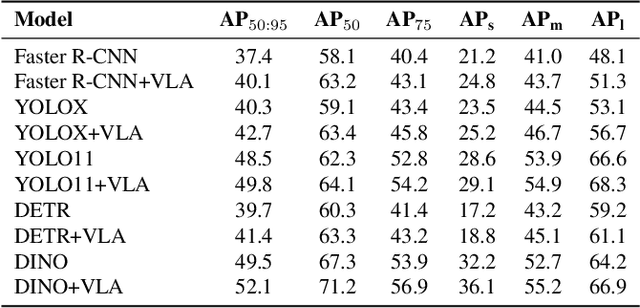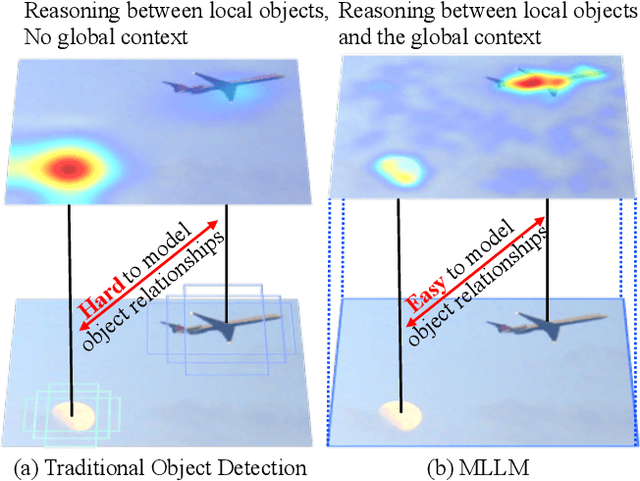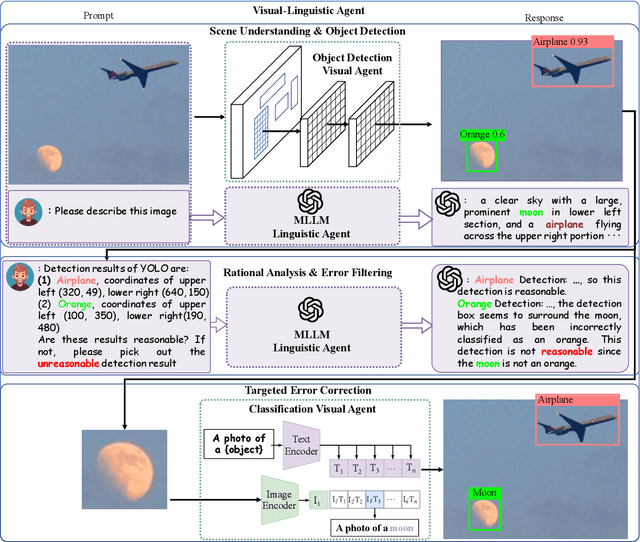Huan Yu
PerchMobi^3: A Multi-Modal Robot with Power-Reuse Quad-Fan Mechanism for Air-Ground-Wall Locomotion
Sep 16, 2025Abstract:Achieving seamless integration of aerial flight, ground driving, and wall climbing within a single robotic platform remains a major challenge, as existing designs often rely on additional adhesion actuators that increase complexity, reduce efficiency, and compromise reliability. To address these limitations, we present PerchMobi^3, a quad-fan, negative-pressure, air-ground-wall robot that implements a propulsion-adhesion power-reuse mechanism. By repurposing four ducted fans to simultaneously provide aerial thrust and negative-pressure adhesion, and integrating them with four actively driven wheels, PerchMobi^3 eliminates dedicated pumps while maintaining a lightweight and compact design. To the best of our knowledge, this is the first quad-fan prototype to demonstrate functional power reuse for multi-modal locomotion. A modeling and control framework enables coordinated operation across ground, wall, and aerial domains with fan-assisted transitions. The feasibility of the design is validated through a comprehensive set of experiments covering ground driving, payload-assisted wall climbing, aerial flight, and cross-mode transitions, demonstrating robust adaptability across locomotion scenarios. These results highlight the potential of PerchMobi^3 as a novel design paradigm for multi-modal robotic mobility, paving the way for future extensions toward autonomous and application-oriented deployment.
Diffusion-Based mmWave Radar Point Cloud Enhancement Driven by Range Images
Mar 04, 2025Abstract:Millimeter-wave (mmWave) radar has attracted significant attention in robotics and autonomous driving. However, despite the perception stability in harsh environments, the point cloud generated by mmWave radar is relatively sparse while containing significant noise, which limits its further development. Traditional mmWave radar enhancement approaches often struggle to leverage the effectiveness of diffusion models in super-resolution, largely due to the unnatural range-azimuth heatmap (RAH) or bird's eye view (BEV) representation. To overcome this limitation, we propose a novel method that pioneers the application of fusing range images with image diffusion models, achieving accurate and dense mmWave radar point clouds that are similar to LiDAR. Benefitting from the projection that aligns with human observation, the range image representation of mmWave radar is close to natural images, allowing the knowledge from pre-trained image diffusion models to be effectively transferred, significantly improving the overall performance. Extensive evaluations on both public datasets and self-constructed datasets demonstrate that our approach provides substantial improvements, establishing a new state-of-the-art performance in generating truly three-dimensional LiDAR-like point clouds via mmWave radar.
Visual-Linguistic Agent: Towards Collaborative Contextual Object Reasoning
Nov 15, 2024



Abstract:Multimodal Large Language Models (MLLMs) excel at descriptive tasks within images but often struggle with precise object localization, a critical element for reliable visual interpretation. In contrast, traditional object detection models provide high localization accuracy but frequently generate detections lacking contextual coherence due to limited modeling of inter-object relationships. To address this fundamental limitation, we introduce the \textbf{Visual-Linguistic Agent (VLA), a collaborative framework that combines the relational reasoning strengths of MLLMs with the precise localization capabilities of traditional object detectors. In the VLA paradigm, the MLLM serves as a central Linguistic Agent, working collaboratively with specialized Vision Agents for object detection and classification. The Linguistic Agent evaluates and refines detections by reasoning over spatial and contextual relationships among objects, while the classification Vision Agent offers corrective feedback to improve classification accuracy. This collaborative approach enables VLA to significantly enhance both spatial reasoning and object localization, addressing key challenges in multimodal understanding. Extensive evaluations on the COCO dataset demonstrate substantial performance improvements across multiple detection models, highlighting VLA's potential to set a new benchmark in accurate and contextually coherent object detection.
A Distributionally Robust Optimisation Approach to Fair Credit Scoring
Feb 02, 2024Abstract:Credit scoring has been catalogued by the European Commission and the Executive Office of the US President as a high-risk classification task, a key concern being the potential harms of making loan approval decisions based on models that would be biased against certain groups. To address this concern, recent credit scoring research has considered a range of fairness-enhancing techniques put forward by the machine learning community to reduce bias and unfair treatment in classification systems. While the definition of fairness or the approach they follow to impose it may vary, most of these techniques, however, disregard the robustness of the results. This can create situations where unfair treatment is effectively corrected in the training set, but when producing out-of-sample classifications, unfair treatment is incurred again. Instead, in this paper, we will investigate how to apply Distributionally Robust Optimisation (DRO) methods to credit scoring, thereby empirically evaluating how they perform in terms of fairness, ability to classify correctly, and the robustness of the solution against changes in the marginal proportions. In so doing, we find DRO methods to provide a substantial improvement in terms of fairness, with almost no loss in performance. These results thus indicate that DRO can improve fairness in credit scoring, provided that further advances are made in efficiently implementing these systems. In addition, our analysis suggests that many of the commonly used fairness metrics are unsuitable for a credit scoring setting, as they depend on the choice of classification threshold.
Neural Operators for Boundary Stabilization of Stop-and-go Traffic
Dec 16, 2023Abstract:This paper introduces a novel approach to PDE boundary control design using neural operators to alleviate stop-and-go instabilities in congested traffic flow. Our framework leverages neural operators to design control strategies for traffic flow systems. The traffic dynamics are described by the Aw-Rascle-Zhang (ARZ) model, which comprises a set of second-order coupled hyperbolic partial differential equations (PDEs). Backstepping method is widely used for boundary control of such PDE systems. The PDE model-based control design can be time-consuming and require intensive depth of expertise since it involves constructing and solving backstepping control kernels. To overcome these challenges, we present two distinct neural operator (NO) learning schemes aimed at stabilizing the traffic PDE system. The first scheme embeds NO-approximated gain kernels within a predefined backstepping controller, while the second one directly learns a boundary control law. The Lyapunov analysis is conducted to evaluate the stability of the NO-approximated gain kernels and control law. It is proved that the NO-based closed-loop system is practical stable under certain approximation accuracy conditions in NO-learning. To validate the efficacy of the proposed approach, simulations are conducted to compare the performance of the two neural operator controllers with a PDE backstepping controller and a Proportional Integral (PI) controller. While the NO-approximated methods exhibit higher errors compared to the backstepping controller, they consistently outperform the PI controller, demonstrating faster computation speeds across all scenarios. This result suggests that neural operators can significantly expedite and simplify the process of obtaining boundary controllers in traffic PDE systems.
Learning "Look-Ahead" Nonlocal Traffic Dynamics in a Ring Road
Dec 05, 2023Abstract:The macroscopic traffic flow model is widely used for traffic control and management. To incorporate drivers' anticipative behaviors and to remove impractical speed discontinuity inherent in the classic Lighthill-Whitham-Richards (LWR) traffic model, nonlocal partial differential equation (PDE) models with ``look-ahead" dynamics have been proposed, which assume that the speed is a function of weighted downstream traffic density. However, it lacks data validation on two important questions: whether there exist nonlocal dynamics, and how the length and weight of the ``look-ahead" window affect the spatial temporal propagation of traffic densities. In this paper, we adopt traffic trajectory data from a ring-road experiment and design a physics-informed neural network to learn the fundamental diagram and look-ahead kernel that best fit the data, and reinvent a data-enhanced nonlocal LWR model via minimizing the loss function combining the data discrepancy and the nonlocal model discrepancy. Results show that the learned nonlocal LWR yields a more accurate prediction of traffic wave propagation in three different scenarios: stop-and-go oscillations, congested, and free traffic. We first demonstrate the existence of ``look-ahead" effect with real traffic data. The optimal nonlocal kernel is found out to take a length of around 35 to 50 meters, and the kernel weight within 5 meters accounts for the majority of the nonlocal effect. Our results also underscore the importance of choosing a priori physics in machine learning models.
CapsuleBot: A Novel Compact Hybrid Aerial-Ground Robot with Two Actuated-wheel-rotors
Sep 17, 2023Abstract:This paper presents the design, modeling, and experimental validation of CapsuleBot, a compact hybrid aerial-ground vehicle designed for long-term covert reconnaissance. CapsuleBot combines the manoeuvrability of bicopter in the air with the energy efficiency and noise reduction of ground vehicles on the ground. To accomplish this, a structure named actuated-wheel-rotor has been designed, utilizing a sole motor for both the unilateral rotor tilting in the bicopter configuration and the wheel movement in ground mode. CapsuleBot comes equipped with two of these structures, enabling it to attain hybrid aerial-ground propulsion with just four motors. Importantly, the decoupling of motion modes is achieved without the need for additional drivers, enhancing the versatility and robustness of the system. Furthermore, we have designed the full dynamics and control for aerial and ground locomotion based on the bicopter model and the two-wheeled self-balancing vehicle model. The performance of CapsuleBot has been validated through experiments. The results demonstrate that CapsuleBot produces 40.53% less noise in ground mode and consumes 99.35% less energy, highlighting its potential for long-term covert reconnaissance applications.
Intention-Aware Planner for Robust and Safe Aerial Tracking
Sep 16, 2023Abstract:The intention of the target can help us to estimate its future motion state more accurately. This paper proposes an intention-aware planner to enhance safety and robustness in aerial tracking applications. Firstly, we utilize the Mediapipe framework to estimate target's pose. A risk assessment function and a state observation function are designed to predict the target intention. Afterwards, an intention-driven hybrid A* method is proposed for target motion prediction, ensuring that the target's future positions align with its intention. Finally, an intention-aware optimization approach, in conjunction with particular penalty formulations, is designed to generate a spatial-temporal optimal trajectory. Benchmark comparisons validate the superior performance of our proposed methodology across diverse scenarios. This is attributed to the integration of the target intention into the planner through coupled formulations.
Roller-Quadrotor: A Novel Hybrid Terrestrial/Aerial Quadrotor with Unicycle-Driven and Rotor-Assisted Turning
Mar 02, 2023



Abstract:Roller-Quadrotor is a novel hybrid terrestrial and aerial quadrotor that combines the elevated maneuverability of the quadrotor with the lengthy endurance of the ground vehicle. This work presents the design, modeling, and experimental validation of Roller-Quadrotor. Flying is achieved through a quadrotor configuration, and four actuators providing thrust. Rolling is supported by unicycle-driven and rotor-assisted turning structure. During terrestrial locomotion, the vehicle needs to overcome rolling and turning resistance, thus saving energy compared to flight mode. This work overcomes the challenging problems of general rotorcraft, reduces energy consumption and allows to through special terrain, such as narrow gaps. It also solves the obstacle avoidance challenge faced by terrestrial robots by flying. We design the models and controllers for the vehicle. The experiment results show that it can switch between aerial and terrestrial locomotion, and be able to safely pass through a narrow gap half the size of its diameter. Besides, it is capable of rolling a distance approximately 3.8 times as much as flying or operating about 42.2 times as lengthy as flying. These results demonstrate the feasibility and effectiveness of the structure and control in rolling through special terrain and energy saving.
Catch Planner: Catching High-Speed Targets in the Flight
Feb 09, 2023



Abstract:Catching high-speed targets in the flight is a complex and typical highly dynamic task. In this paper, we propose Catch Planner, a planning-with-decision scheme for catching. For sequential decision making, we propose a policy search method based on deep reinforcement learning. In order to make catching adaptive and flexible, we propose a trajectory optimization method to jointly optimize the highly coupled catching time and terminal state while considering the dynamic feasibility and safety. We also propose a flexible constraint transcription method to catch targets at any reasonable attitude and terminal position bias. The proposed Catch Planner provides a new paradigm for the combination of learning and planning and is integrated on the quadrotor designed by ourselves, which runs at 100$hz$ on the onboard computer. Extensive experiments are carried out in real and simulated scenes to verify the robustness of the proposed method and its expansibility when facing a variety of high-speed flying targets.
 Add to Chrome
Add to Chrome Add to Firefox
Add to Firefox Add to Edge
Add to Edge